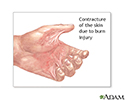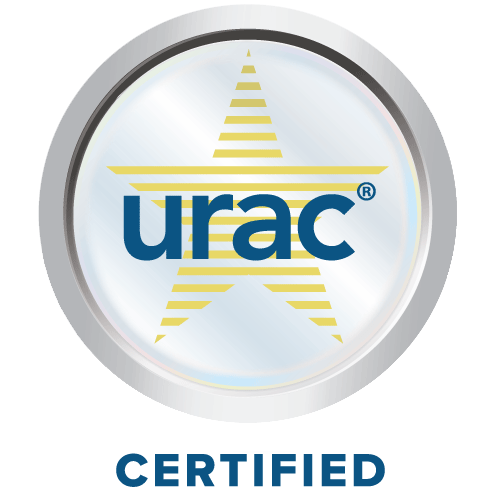Contracture deformity
Deformity - contracture
A contracture develops when normally stretchy (elastic) tissues are replaced by nonstretchy (inelastic) fiber-like tissue. This tissue makes it hard to stretch the area and prevents normal movement.
Contractures mostly occur in the skin, the tissues underneath, and the muscles, tendons, joint capsule, and ligaments surrounding a joint. They reduce the range of motion and function in a certain body part. Often, there is also pain.
Causes
Contracture can be caused by any of the following:
- Brain and nervous system disorders, such as cerebral palsy or stroke
- Inherited disorders (such as muscular dystrophy)
- Nerve damage
- Reduced use (for example, from lack of mobility or injuries)
- Severe muscle and bone injuries
- Scarring after traumatic injury or burns
Home Care
Follow your health care provider's instructions for treating a contracture at home. Treatments may include:
- Doing exercises and stretches
- Using braces and splints
When to Contact a Medical Professional
Contact your provider if:
- A contracture seems to be developing.
- You notice a decreased ability to move a joint.
What to Expect at Your Office Visit
Your provider will ask about your symptoms. Questions may include when the symptoms began, whether or not you have pain in the affected area, and what treatments you've had in the past.
Depending on the cause and type of contracture, you may need tests such as an x-ray.
Treatment may include physical therapy, medicines, and orthopedic braces. Surgery may be helpful for some types of contractures.
References
Campbell TM, Dudek N, Trudel G. Joint contractures. In: Frontera, WR, Silver JK, Rizzo TD Jr, eds. Essentials of Physical Medicine and Rehabilitation. 4th ed. Philadelphia, PA: Elsevier; 2019:chap 127.
Miller RH, Azar FM, Throckmorton TW. Shoulder and elbow injuries. In: Azar FM, Beaty JH, eds. Campbell's Operative Orthopaedics. 14th ed. Philadelphia, PA: Elsevier; 2021:chap 46.
Review Date: 8/27/2024








